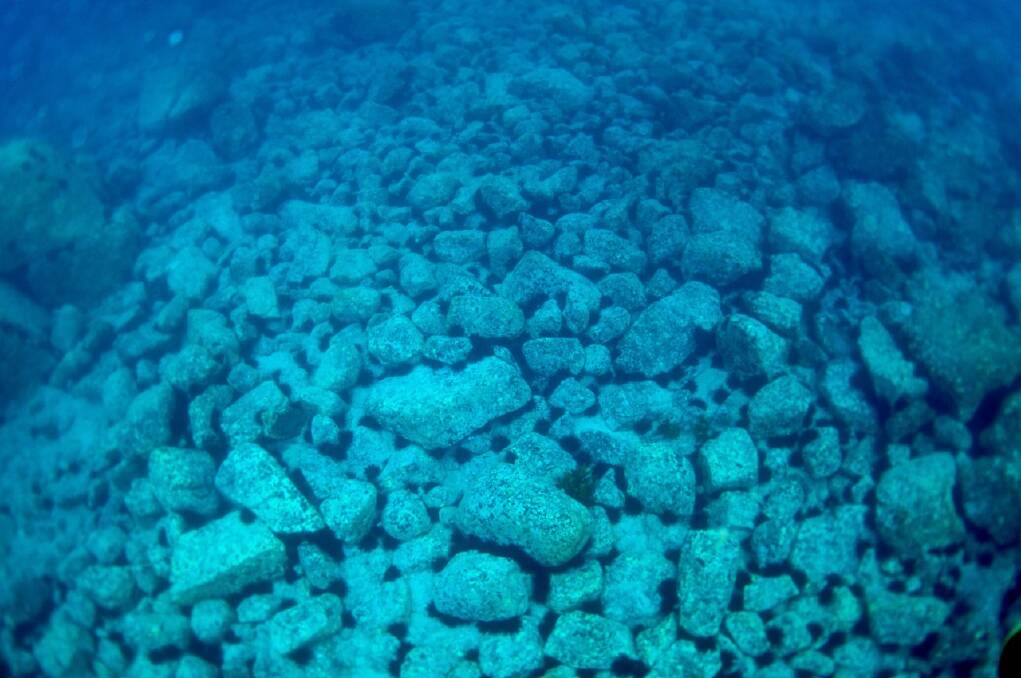Sea urchins are the greatest threat to Far South Coast coastal biodiversity and are creating vast wastelands on offshore reefs, largely devoid of life, divers say.
Subscribe now for unlimited access.
$0/
(min cost $0)
or signup to continue reading
Conservationists and abalone divers are joining forces to raise awareness of the hidden problem they say could wipe out life on reefs from Sydney to the Victorian border.
The problem is getting worse with extensive sea urchin barrens dominating reefs at Montague Island, off Narooma, and south to reefs off Bermagui, Tathra, Merimbula and Eden.
Divers from the Abalone Association of NSW recently culled urchins off the Three Brothers island at Bermagui, thanks to a program funded by the Fisheries Research and Development Corporation.
Similar programs are proving successful further south at Mallacoota and also Victoria and Tasmania, where purple sea urchins marching south have attacked large kelp forests.
Abalone Association of NSW member and Narooma commercial abalone diver, Steve Bunney said action must be taken now.
“Maintaining our kelp forests is vital for our shallow water marine biodiversity and losing this kelp, which is happening now, will mean we will lose life on our reefs,” Mr Bunney said.
Nature Coast Marine Group representative Bill Barker said that his group had been trying to get the State Government to recognise the problem in the Marine Estate review that has been going on for the past six years.
“Without this recognition, we are concerned that nothing will be done,” Mr Barker said.
“Most people don’t know that half of the shallow rocky reefs on the South Coast of NSW look more like an underwater moonscape than a healthy and diverse habitat.
“Over the years, millions of purple sea urchins have grazed down the kelp forests, leaving just bare rock covered by stony encrusting algae, the urchins themselves and a few tough critters eking out a minimal existence. In these areas there is virtually no plant life.
“These areas are actually known as ‘urchin barrens’. They have lower productivity and lower biodiversity than the kelp forests they have replaced.
“More research on the problem needs to be done but the present situation is probably the result of ecological processes that have been going on for many years that can be traced back to historical overfishing of the natural predators of the urchins. This has allowed their numbers to explode.”

Neil Andrew, an academic specialising in the field of urchins barrens, in the book Under Southern Seas (University of NSW 1999) said: “Between Sydney and Wonboyn, slightly more than 50 per cent of nearshore reef is Barrens Habitat and the percentage is higher (>65 per cent) between Merimbula and Wonboyn.”
Mr Bunney confirmed the problem was worse the further south you went, as the urchins seemed to be colonising new territory all the way down to the magnificent and now threatened kelp forests of Tasmania.
He said the only solution was killing urchins on a large scale and then propagating and replanting “cray weed” or kelp and also translocating gastropods such as abalone and turban shells to breath new life into barren reefs.
“They are having the same urchin barren problem in places off California off Monterey where local dive clubs are getting involved in removing urchins and restoring the reefs,” Mr Bunney said. He said similar work was being done off Sydney with Operation Crayweed.
Mr Barker and the Nature Coast Marine Group provided detailed information for the government’s Threat and Risk Assessment last year, as part of the Marine Estate review.
“We also raised it with officials directly,” Mr Barker said.
“Despite the fact that DPI Fisheries scientists and other experts are well aware of the problem, the government’s recently-released draft Marine Estate strategy contains nothing specific aimed at turning this situation around, or even to undertake research into the problem.”
“A decline in productivity and diversity is obviously bad for the environment. But there is an economic dimension as well: urchin barrens are bad for the abalone industry and even for the urchin fishery.
“It can’t be good for fish populations, since no plants and their associated animal life means no food for the smaller creatures and fish on which bigger fish feed. And that is before we consider the multiple challenges posed by climate change. Something needs to be done.”
The Nature Coast Marine Group has produced a short video showing the barrens:


